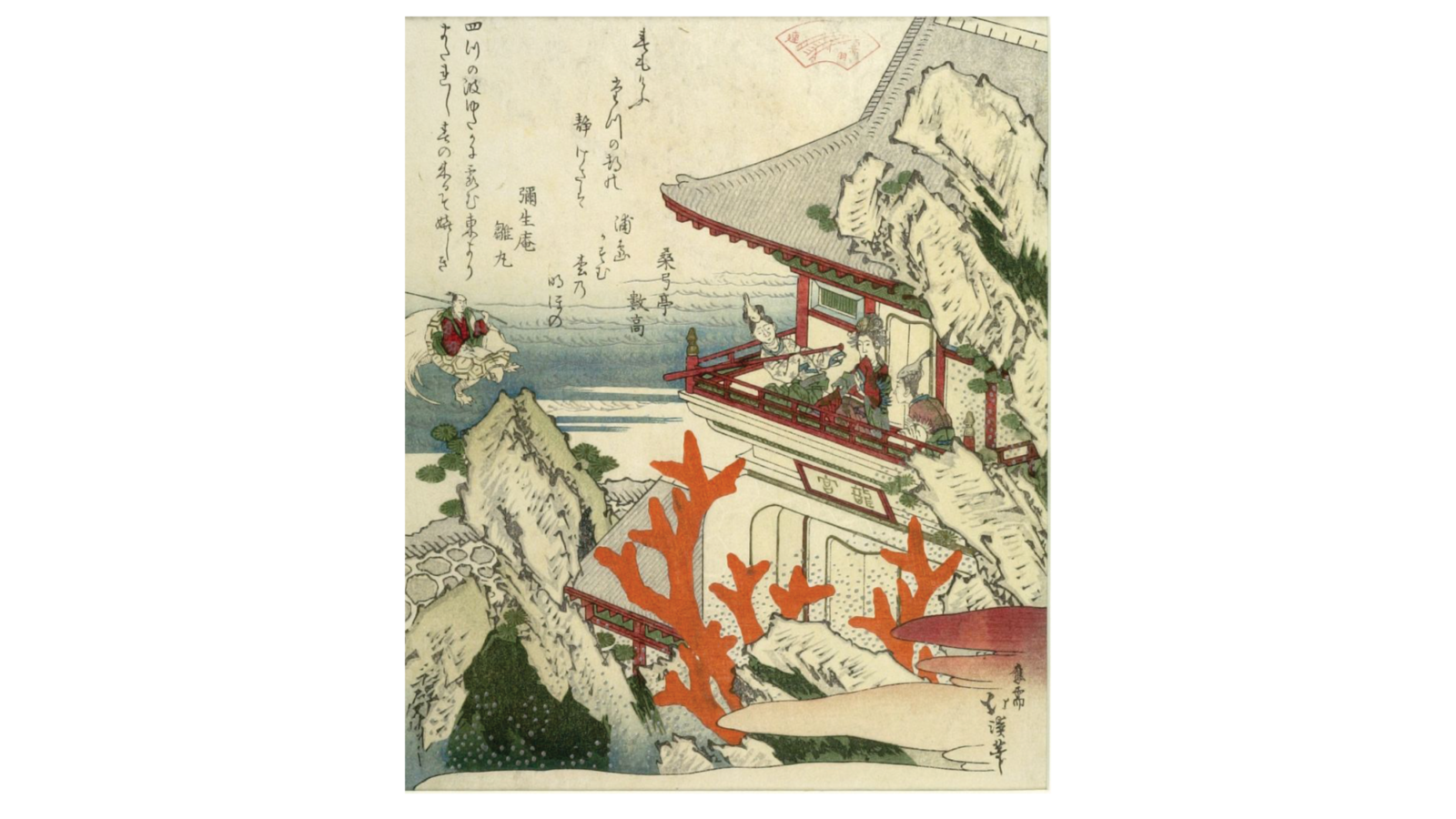
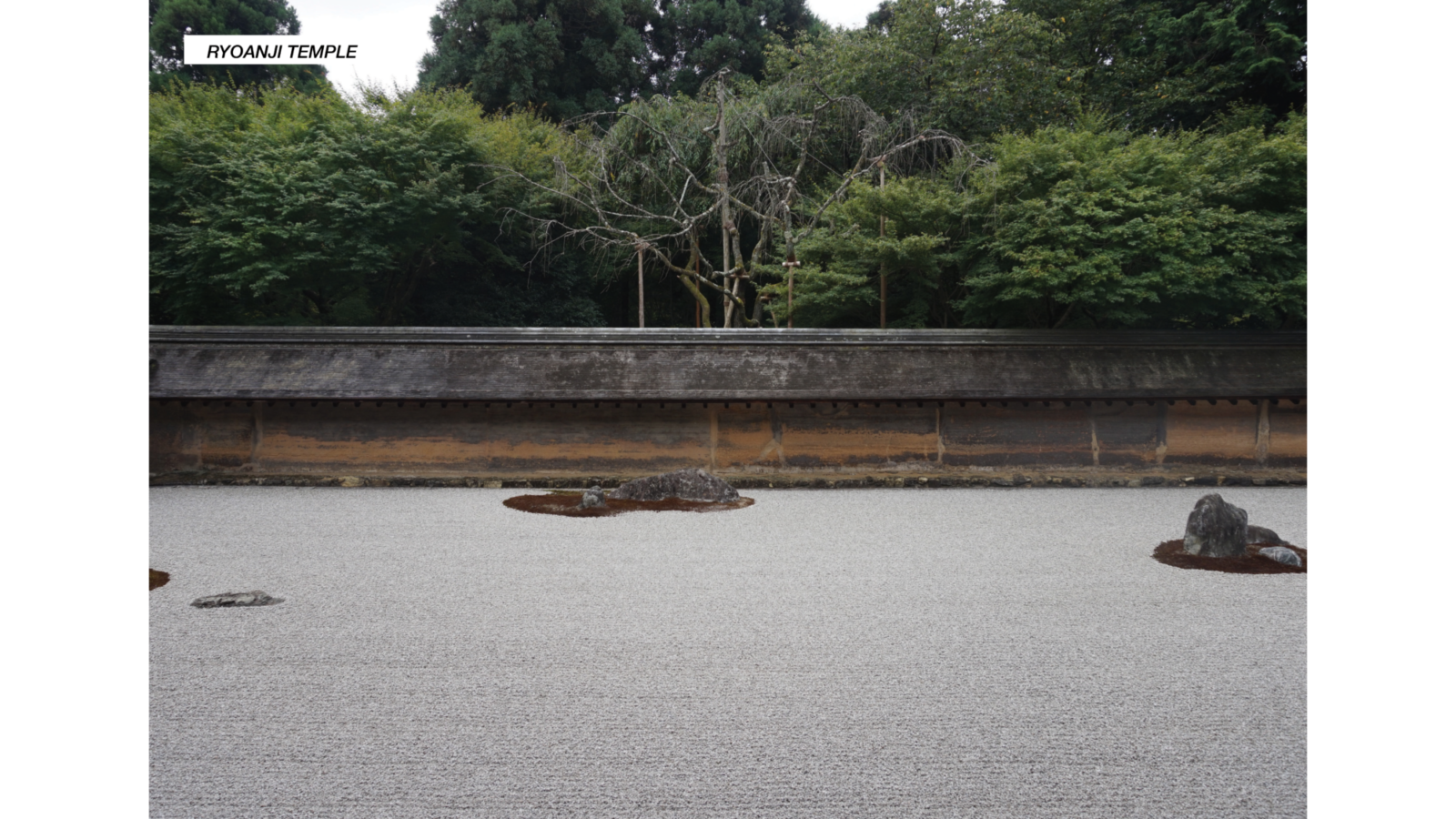
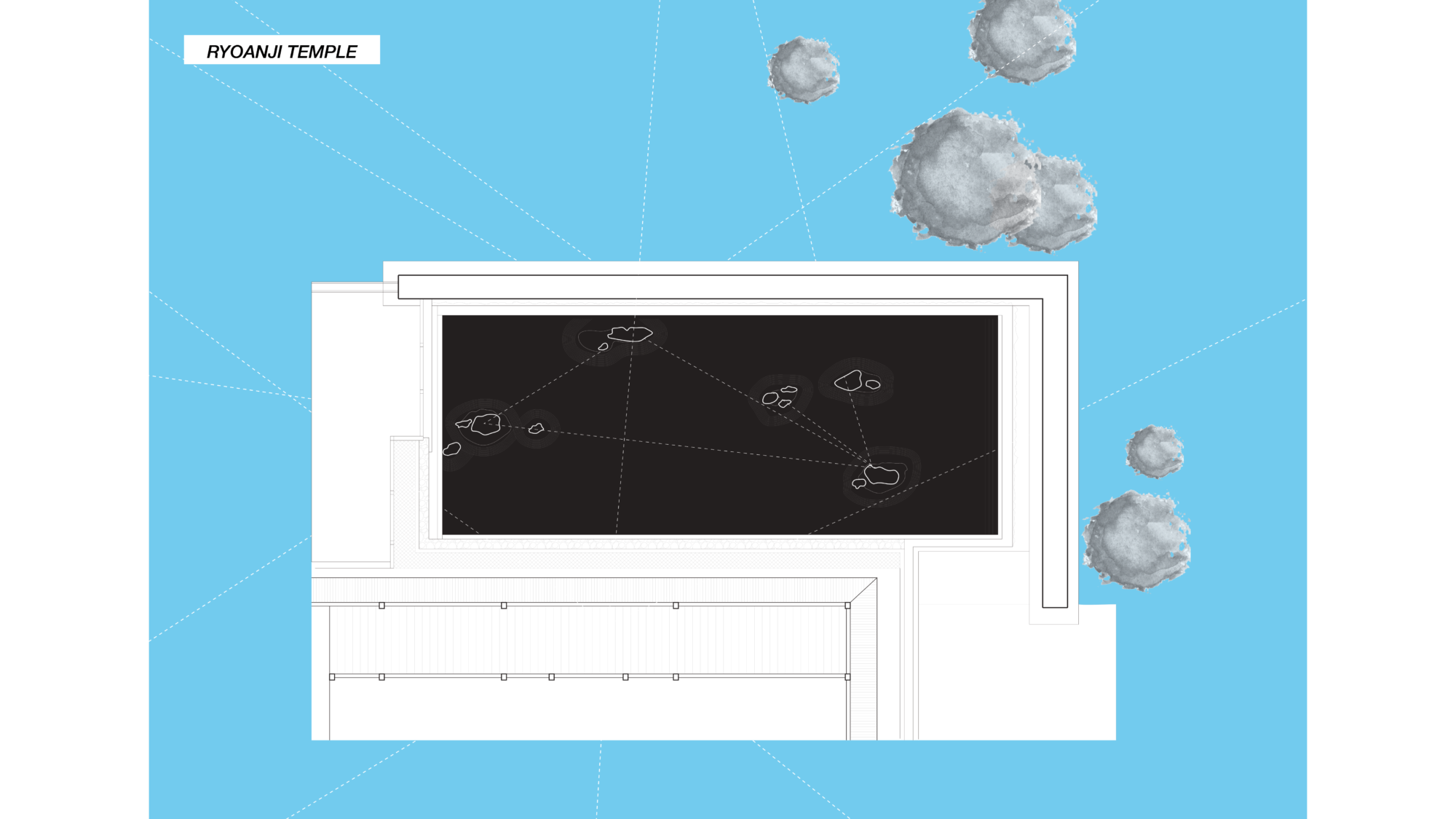
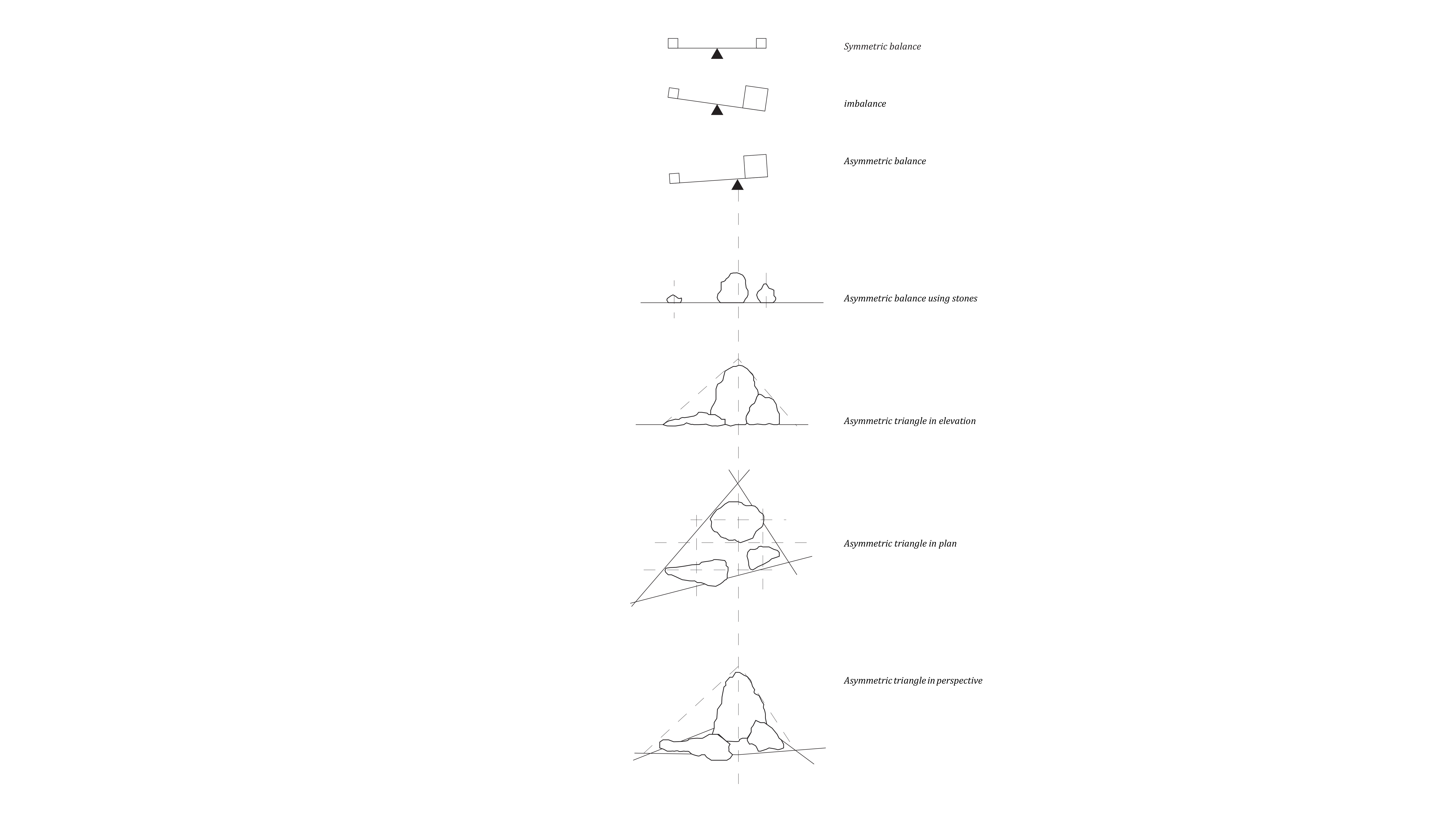
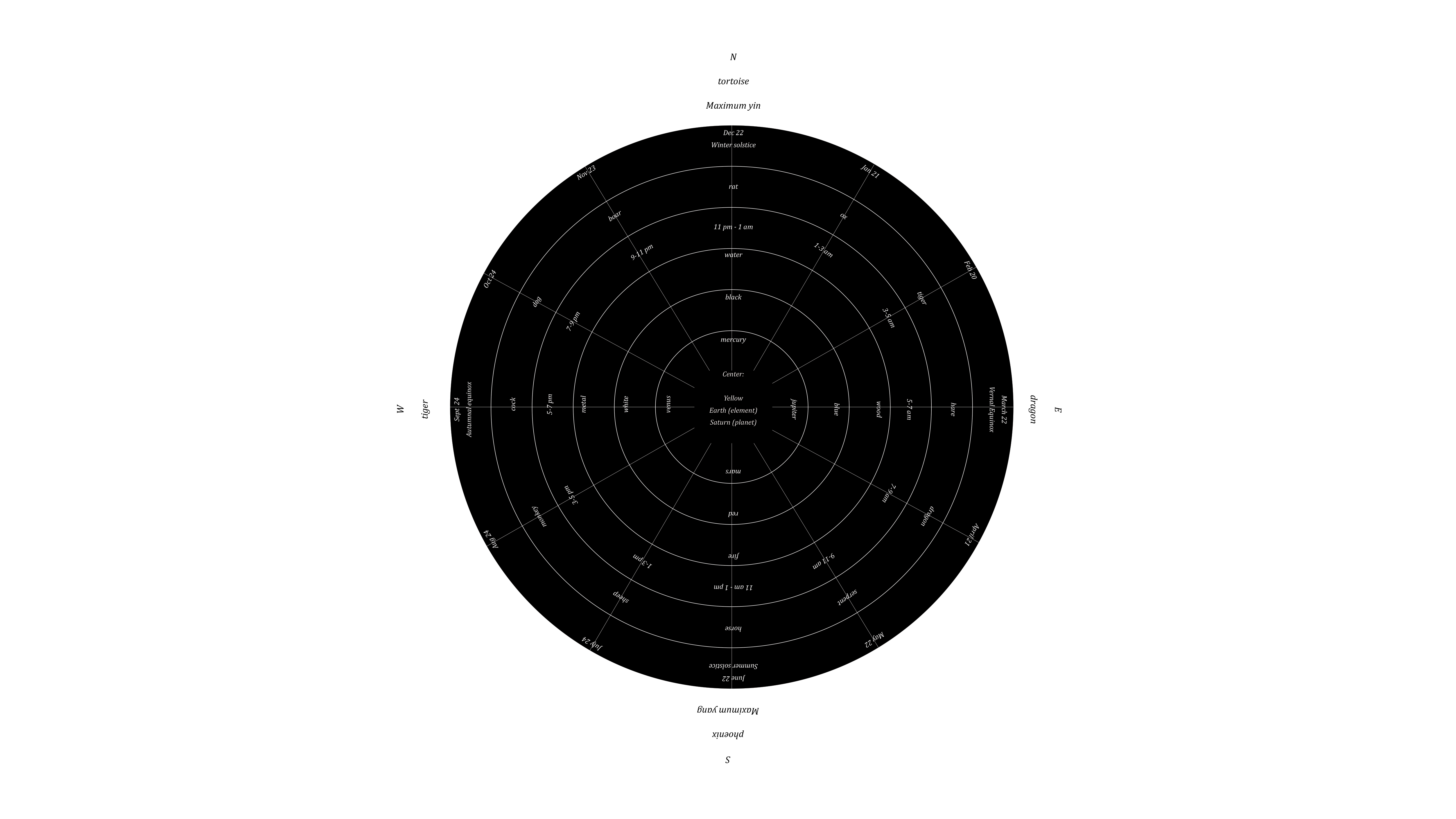
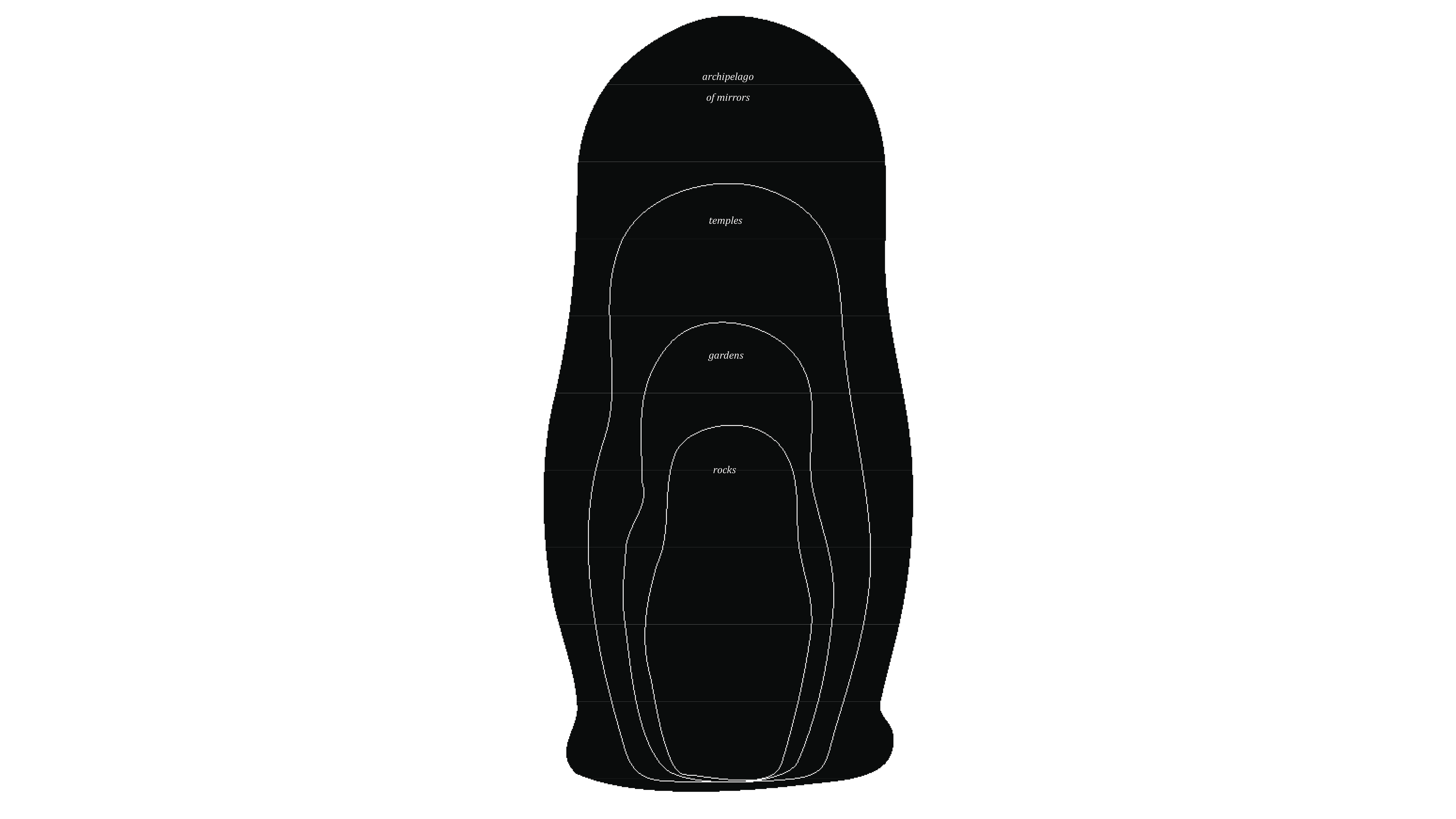
ARCHIPELAGO OF MIRRORS
JAPAN, 2017
Sitting on the deck of Ryogen-in’s temple, observing the rocks in the Isshidan garden. They are gently placed over a dry landscape heavy, but also light, opaque but also diffuse. Suddenly starts raining, a water curtain form from the wood ceiling and falls all the way through a small canal that surrounds the temple, my feet don’t reach the floor I am elevated.
“Isshidian” zen garden expresses the ideal world, it resembles the Mt Penglai stone as described in the philosophy of the Daoist immortals. Mt Penglai refers to the auspicious island which was home of the sages with elixirs of immortality. Zen gardens virtually express a world of enlightenment, which cannot be depicted verbally.
The research asserts that in Foucault’s terms the zen gardens can act as heterotopias defined through the analogy of the mirror:
“In the mirror, I see myself there where I am not, in an unreal virtual space that opens up behind the surface, I am over there, there where I am not, a sort of shadow that gives my own visibility to myself, that enables me to see myself there where I am absent: such is the utopia of the mirror. But it is also a heterotopia in so far as the mirror does exist in reality, where it exerts a sort of counteraction on the position that I occupy.” (Foucault, Michel and Miskowiec, Jay 1986, 24)
The Zen gardens in Kyoto, act as a mirrors because it gives to the utopia of the Daoist immortals a physical space in the real a world. The ideal space is connected with the world (because of the physicality of the rock garden), however the reflection from the mirror is unreal since it’s a representation of an imagined reality. Contemplation same as the mirror analogy is the only intersection point between the ideal and the reality. The Zen garden is meant not to be inhabited but to be contemplated.
Urbanistically, Zen gardens are important in terms of the layout of Japanese cities, especially Kyoto. Not only because of religious reasons but most importantly because of the sense of control, contemplation and aesthetics of the city. The fact that it’s a heterotopic replication throughout the urban environment of Kyoto, implies strategic decisions and a dichotomy between the isolation of the garden but the replication of it; positioned as an archipelago of “mirrors”.
The objective of the investigation is to unveil the invisible lines that tight together the archipelago of the Zen gardens in Kyoto as heterotopian spaces taking into consideration physical as well as relational features. Consequently, I would introduce new readings to this specific heterotopia such as “Mirroring Miniaturization” and the “Reflections on Boundaries vs Reflection that crosses Boundaries”. In order to argue about archipelagic collective spaces and the importance for this reading in urban design.
Hefernan Award Harvard Graduate School of Design